The best way to know how your customers and stakeholders feel about your business, products, or services is to ask them. A good questionnaire can serve this purpose.
If you are looking for a guide on how to create a questionnaire, you have landed on the right page. With concise steps and clear examples, this article delivers a straightforward pathway from crafting your initial question to making sense of the data you collect.
Whether you’re a marketer, academic, or curious mind, we’ve got you covered on how to design questions that get to the heart of what you need to know. Prepare to enhance your survey skills and gather the insights that matter, without getting overwhelmed with unnecessary details. Let's get started!
TL;DR
-
Questionnaires are a useful way to know how your customers’ and stakeholders’ opinions, feedback, and perceptions about your business, products, and services.
-
Designing an effective questionnaire is essential for gathering accurate data and requires understanding different question types, clear research objectives, and the selection of an appropriate format.
-
Crafting questions involves ensuring clarity and impartiality, structuring the questionnaire logically, and balancing the depth of information gathered with the necessity for brevity.
-
Pilot testing is an important phase before fully launching a questionnaire, allowing for the identification of design issues and the opportunity to make iterative improvements based on feedback.
-
Zonka Feedback is an effective survey platform that enables you to create any type of questionnaire with its ready-to-use customizable templates and share them through multiple channels.
What Is a Questionnaire? (+ Questionnaire vs Survey)
A questionnaire is a structured set of questions used to collect data. Questionnaires are designed to collect structured data and can include quantitative questions that yield numerical data for analysis. A survey is the broader process that includes the questionnaire plus sampling, distribution, and analysis. The terms get mixed up online; use the table below to clarify for readers (and capture the “questionnaire vs survey” search intent).
|
Aspect |
Questionnaire |
Survey |
|---|---|---|
|
Purpose |
Collect responses via a fixed set of questions |
End-to-end process of gathering and analyzing data |
|
Scope |
Instrument only |
Instrument + sampling + distribution + analysis |
|
Ownership |
Typically content/UX/researcher |
Cross-functional (research/ops/analytics) |
|
Output |
Structured data, numerical data, raw responses |
Insights, metrics, decisions |
Decoding the Basics of Questionnaire Design
A well-designed questionnaire is vital for a successful survey. It aids in gathering precise data and guarantees that respondents comprehend the questions, providing meaningful responses. The fundamental aspects of questionnaire design include identifying the purpose of your research.
Question development is also essential, involving the careful creation and refinement of survey questions to ensure they accurately capture respondents' opinions and behaviors. Additionally, providing appropriate context for each question can improve clarity and response reliability. Understanding different types of questions and selecting the appropriate format are also key steps.
1. Identify the Purpose of Your Research
A clear research purpose should form the foundation of every survey questionnaire. This purpose influences the questions you pose and their presentation format. It is pivotal in determining the present status or situation and measuring specific variables like customer satisfaction or domestic and foreign policy opinions.
For instance, if you want to measure customer satisfaction, CSAT survey questions would be appropriate, whereas for measuring customer loyalty, NPS survey (Net Promoter Score) questions would be the best choice for your questionnaire. Similarly, demographic questions would be more suitable in a market research survey, and employee feedback and eNPS questions would be used to measure employee satisfaction and loyalty.
Therefore, the research objectives should be clearly defined, guiding the creation of valid and reliable questions tailored to address specific research goals.
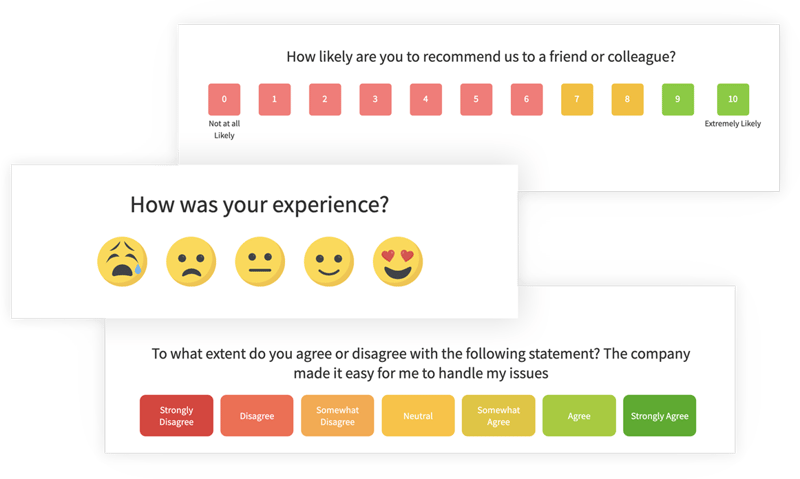 2. Explore and Understand the Different Types of Questions
2. Explore and Understand the Different Types of Questions
A diverse range of question types encompassing multiple choice questions, rating scale survey questions, Likert scale survey questions, matrix survey questions, dropdown, open-ended & closed-ended questions, and demographic questions can be employed in questionnaires. Using the most appropriate ones or a mixture of these question types can help you garner a broad range of data from your respondents.
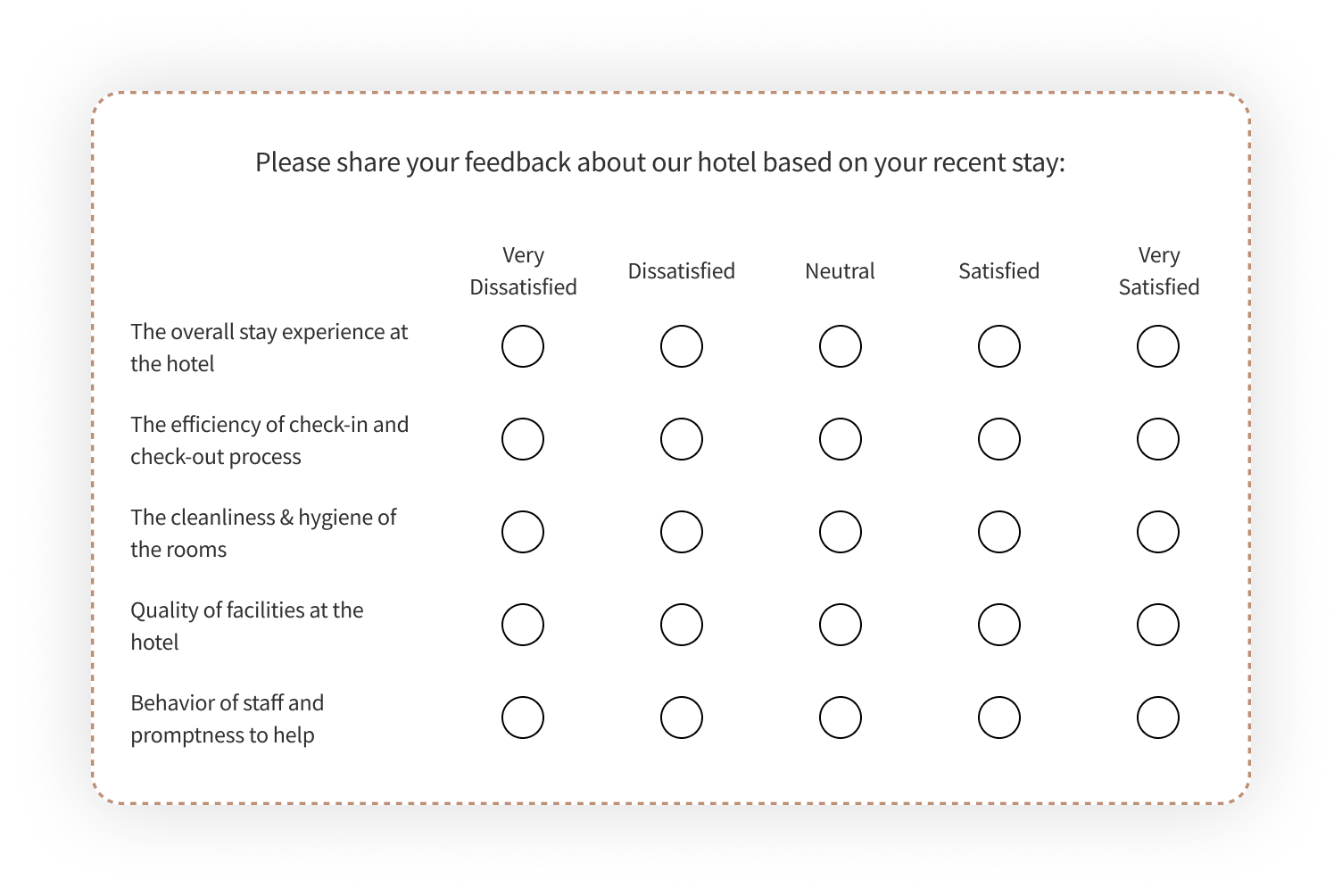
For instance, open-ended questions allow respondents to express their thoughts in their own words, offering rich, qualitative data. On the other hand, rating scale questions enable respondents to provide feedback in a comparative degree, which is beneficial when you need to collect quantitative data.
So when you want your customers to rate a certain experience or aspect of your business, you should use closed-ended rating questions. Furthermore, when you want to know the exact reason behind the customers’ ratings and responses, it is better to use at least one open-ended question to collect rich feedback.
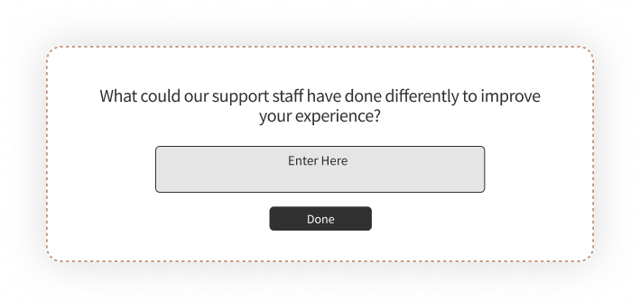 3. Select the Appropriate Questionnaire Format
3. Select the Appropriate Questionnaire Format
The questionnaire format, as crucial as the questions you pose, contributes significantly to the comprehension and accurate response of your respondents. When selecting the suitable format, consider factors such as the required information, the target respondents, and a method that aligns with your research objectives to obtain more accurate responses.
Question formats like multiple choice, 1 to 10 opinion scale, and Likert scale questions are suitable for use in questionnaire formats.
Crafting Your Questions for Maximum Insight
After establishing the fundamentals, the subsequent step involves formulating your questions. The creation of clear, unbiased, and well-structured questions is pivotal in harnessing valuable insights. This involves formulating clear and unbiased questions, structuring your questionnaire for flow, and balancing depth and brevity.
1. Formulate Clear and Unbiased Questions
Clarity and impartiality are the hallmarks of effective survey questions. Clear and simple language ensures that respondents understand your questions and provide accurate answers. Furthermore, avoiding biased questions or leading questions minimizes the risk of influencing respondents’ answers and ensures that the data you collect is a true reflection of their thoughts and opinions.
Also avoid double-barreled questions in order to avoid confusion for the respondents that may lead to inaccurate responses or a lower response rate.
2. Structuring Your Questionnaire for Flow
A questionnaire should narrate a story with a clear introduction and logical progression, steering respondents through a sequence of related questions. The instructions and questions should be clear, presented in a logical order, and should avoid complex filtering in order to maintain engagement and deliver results.
3. Depth and Brevity
A questionnaire requires a balance between information depth and conciseness. To achieve this balance, follow these guidelines:
-
Have a clear understanding of the research objectives.
-
Use straightforward language.
-
Select appropriate question types.
-
Restrict the number of questions.
By following these guidelines, you can make a questionnaire that is both informative and concise.
Tailoring Questions to Your Target Audience
An effective questionnaire uses language comprehensible to its target audience and integrates demographic questions. This helps in creating questions that resonate with the respondents, thereby increasing the response rates and the quality of data collected.
1. Incorporate Demographic Questions
Demographic questions play a vital role in understanding your respondents better. They provide valuable information about characteristics such as:
-
Age group
-
Gender
-
Location
-
Occupation
-
Educational background
When incorporated into your questionnaire, they help in delineating the population, identifying potential disparities, and gathering crucial information.
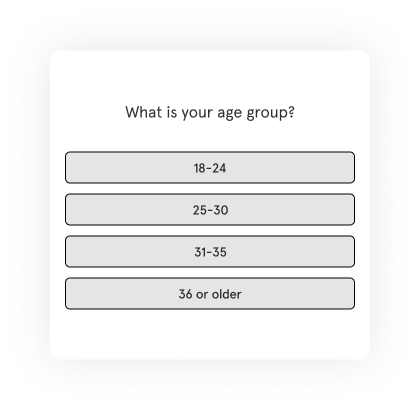 2. Use Language That Speaks to Your Audience
2. Use Language That Speaks to Your Audience
The language used in your questionnaire should be clear, simple, and relevant to our target audience. This ensures that respondents understand your questions and are more likely to engage with your questionnaire.
Using straightforward and uncomplicated language is particularly important when addressing a professional audience or individuals who are not native English speakers.
Enhancing Data Quality with Question Types and Structures
The use of varied question types and structures considerably enhances the data quality you gather. Using a variety of question types, such as rating scales, multiple-choice questions, and matrix tables, can provide a richer and more comprehensive data set.
Let’s delve deeper into each of these question types.
1. The Role of Rating Scales and Likert Items
Rating scales and Likert items are commonly used in questionnaires to measure attitudes and opinions. They can provide quantitative insights into how respondents feel about a particular statement or product.
These scales enable respondents to provide feedback in a comparative degree, including answer choices like "strongly agree" and “strongly disagree,” thereby providing a quantitative measure of their sentiments and helping to measure customer satisfaction.
2. Making the Most of Multiple Choice and Dropdowns
Multiple choice and dropdown questions are useful in many questionnaires. They can help you gather quantitative data quickly and efficiently. However, it is important to ensure that each multiple-choice question has only one clear best answer, and dropdown questions should be used wisely to maintain survey organization and prevent overwhelming the questionnaire with inaccurate answers.
3. Employing Matrix Tables and Ranking Questions
Matrix tables and ranking questions can help you collect more detailed and comparative data. Matrix tables consolidate multiple questions with identical answer options, minimizing repetition and directing respondents to furnish specific comparative data.
On the other hand, ranking questions enable respondents to prioritize a list of answers, providing quantitative insights into preferences and priorities.
Collecting and Analyzing Questionnaire Data
With your questionnaire designed and prepared, the following step involves data collection and in-depth analysis. This includes choosing the right data collection method and interpreting the data for actionable insights.
Let’s delve deeper into these aspects.
1. Choose the Right Data Collection Method
The data collection method you choose can have a significant impact on the quality, accuracy, and reliability of your data. Depending on your target audience and research process goals, you might choose various online survey channels to share online questionnaire through email surveys, SMS surveys, link surveys and website surveys; and offline survey channels like iOS surveys, kiosk surveys, or sharing in-person questionnaires through mobile devices like smartphones and tablets.
Conducting multiple surveys can help ensure a more comprehensive understanding of your target audience. The characteristics of your target audience, including demographics, behavior, and expertise, as well as their location (on-premises or off-premises) play a significant role in determining the appropriate method.
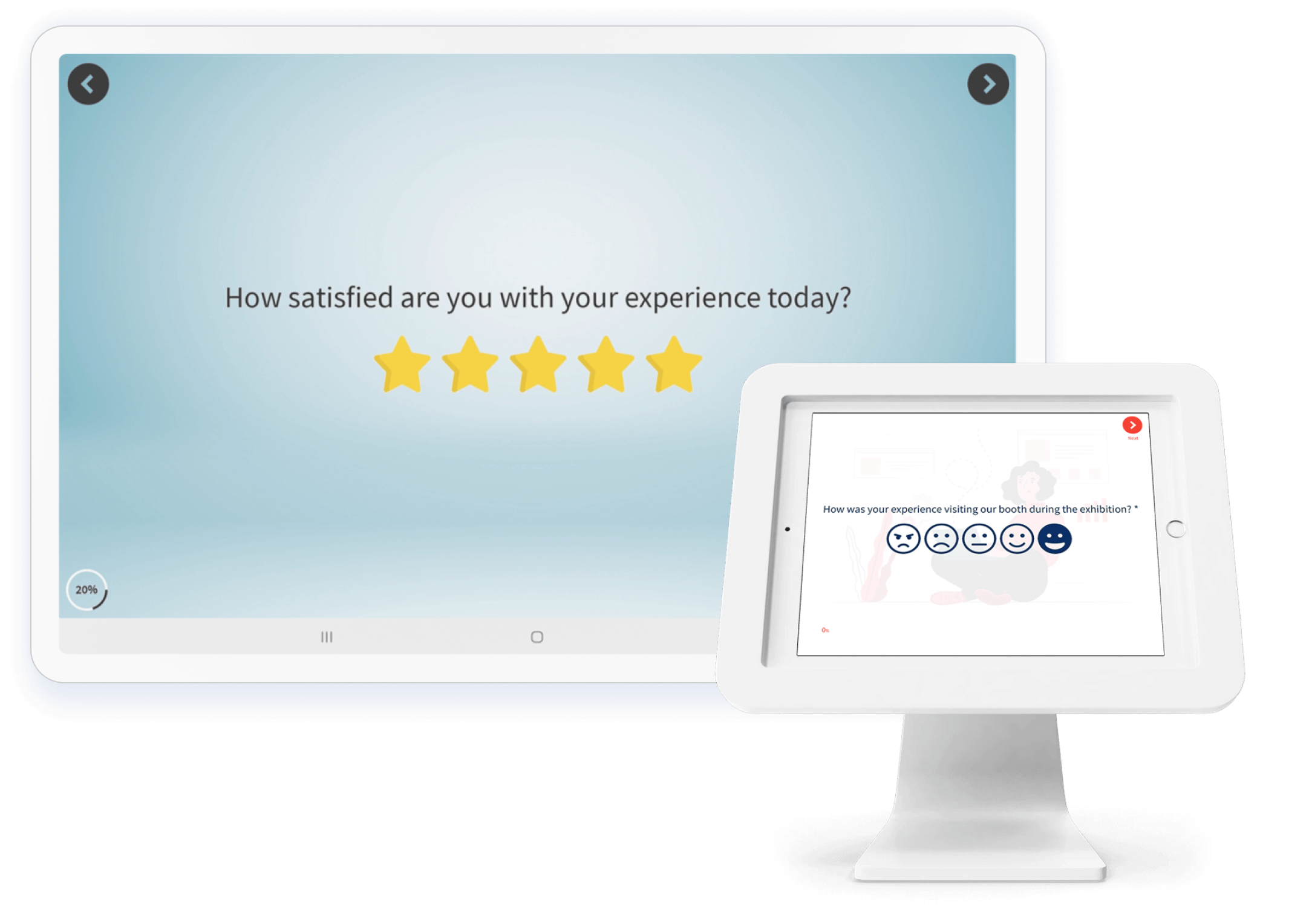
2. Interpret Data for Actionable Insights
Interpreting the data you’ve collected is just as important as collecting it in the first place. You need to analyze responses and interpret the data to draw meaningful conclusions and informed decision-making. This involves using data analysis techniques and analytical reports such as:
-
Trends Report
-
Snapshot Report
-
Insights Report
-
Team Performance Report
-
Location Insights Report
-
Text Analytics Report
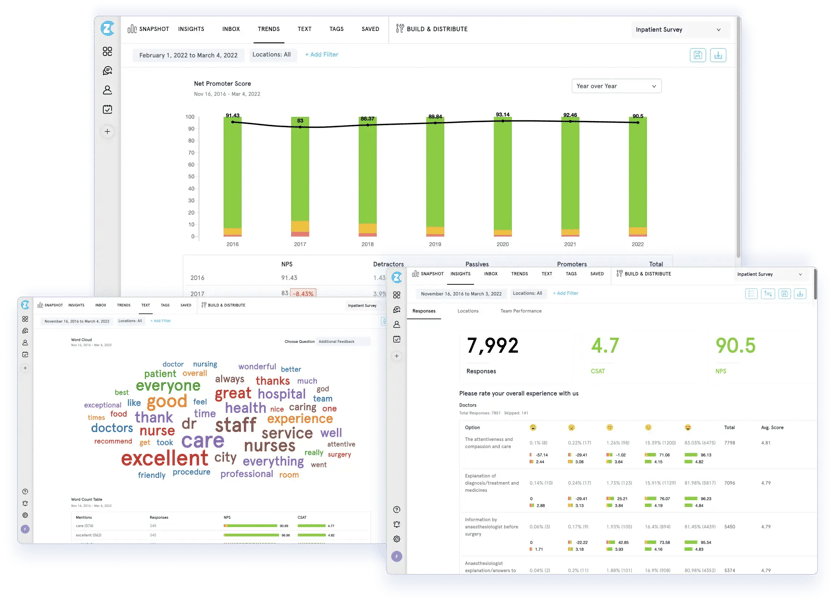 Leveraging Templates and Technology
Leveraging Templates and Technology
In the current digital era, templates and technology simplify the questionnaire design process. By using effective survey software that provides you with ready-to-use survey templates, you can streamline the questionnaire creation process and improve the quality of your data.
Let’s explore these tools in more detail.
1. Choose the Right Survey Tool
To ensure that your survey questionnaire is effective enough to collect the targeted data or feedback, you must use an effective survey software which offers you ready-to-use templates and questionnaire examples to create surveys and questionnaires.
Powerful customer feedback and survey tools offer numerous benefits, including:
-
Cost efficiency
-
Survey efficiency and scalability
-
Rapid data collection and analysis
-
Data precision and dependability
-
Enhanced response rates.
Advanced functionalities like sentiment analysis and skip logic can also help in making your survey questionnaires dynamic and conversational for the respondents, and recognizing and enhancing the overall user experience, taking customer feedback into account.
2. Use the Most Appropriate Template
Questionnaire templates help you save time and ensure a professional appearance. They offer pre-formulated questions and response options, eliminating the need to develop them from scratch.
Zonka Feedback is an effective tool that offers you prebuilt survey templates to create any type of questionnaire as per your research and survey objectives. These templates can also be customized to fit your specific requirements. You can also try questionnaire templates in its plan.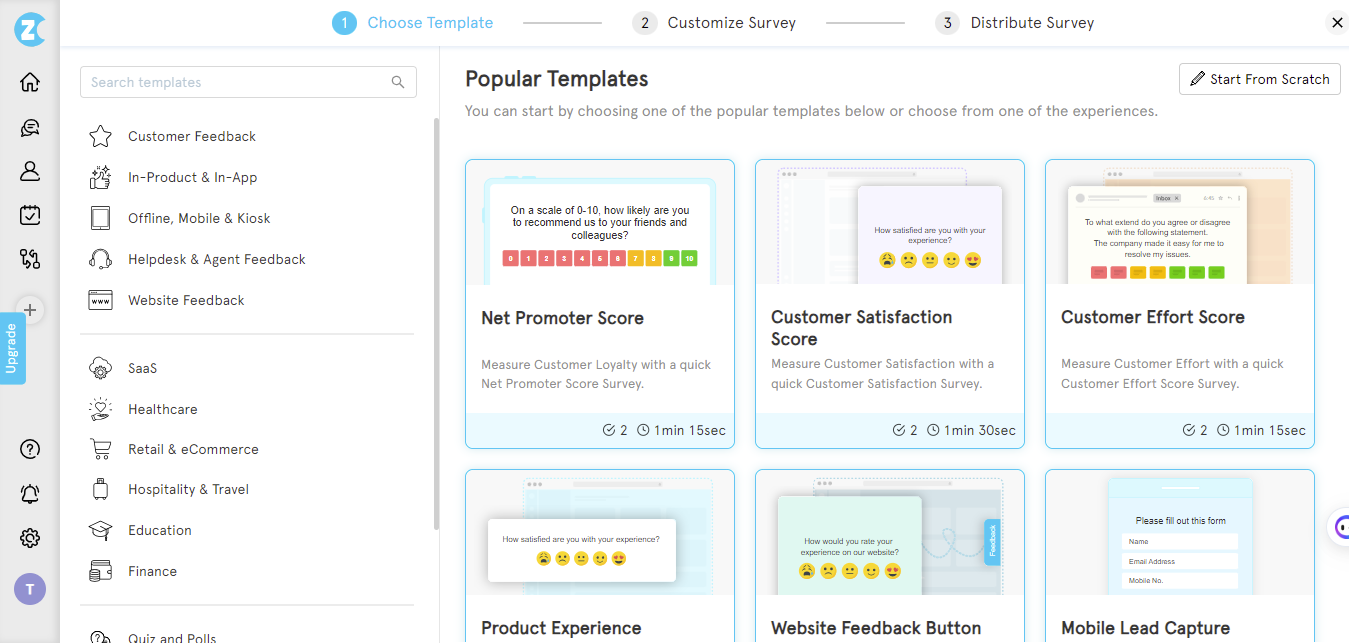
Ensuring Effective Deployment and Response Rates
Having prepared your questionnaire, the subsequent step entails its effective deployment to guarantee high response rates. This involves maximizing visibility across various platforms and encouraging participation through incentives.
Let’s discuss these strategies in more detail.
1. Maximize Visibility Across Platforms
Maximizing visibility across platforms is crucial for ensuring high response rates. Distributing your questionnaire across multiple platforms enhances its visibility and accessibility. Here are some strategies for enhancing visibility on different platforms:
-
Email: Craft clear subject lines using email template creators for your email communication to grab the attention of your recipients.
-
Social media: Share your survey on various social media platforms and encourage your followers to participate and share it with their networks.
-
Websites: Integrate your survey directly into your website to make it easily accessible to your visitors. You can share website surveys through various feedback widgets like feedback button, slide-up surveys, and popup surveys.
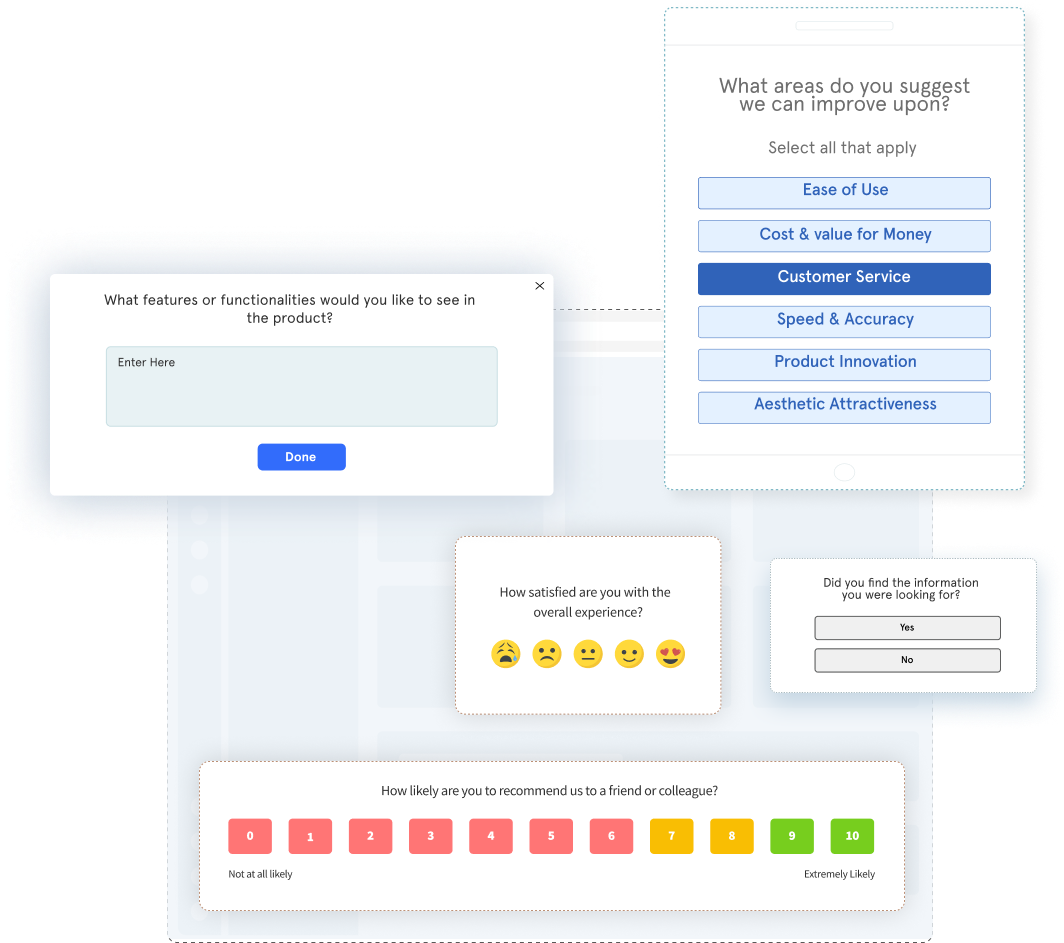
By utilizing these strategies, you can increase the visibility of your questionnaire and improve your response rates.
2. You can also encourage Participation Through Incentives
Offering incentives is a proven strategy for encouraging respondents to complete your questionnaire. Whether it’s monetary rewards like cash, checks, gift cards, or coupons, or non-monetary incentives like thank you gifts or sample products, incentives can significantly boost your response rates. However, it’s critical to offer incentives responsibly, without influencing the questionnaire results.
Refining Your Approach with Pilot Testing
It is crucial to carry out pilot testing before the full launch of your questionnaire. Pilot testing helps you identify and address issues with your questionnaire, such as unclear questions or formatting problems, before distributing it to your target audience.
Let’s explore how to conduct pilot testing effectively.
1. Detecting Issues Before Full Release
Pilot testing is crucial in detecting any potential issues with your questionnaire before its full release. By evaluating the questionnaire under survey conditions, you can detect potential problems with the design, wording, or instructions. This process can uncover a range of issues, from unclear or ambiguous questions to insufficient response choices or survey length.
2. Iterative Improvements Based on Feedback
Once you’ve identified issues with your questionnaire, the next step is to make improvements based on the feedback you’ve received. This involves a continuous testing and refinement process, which ensures that your questionnaire is optimized for the best results.
From reviewing the feedback and data obtained from the pilot test to making necessary revisions to the questionnaire, each step contributes to improving your questionnaire’s clarity, quality, and validity.
Implementing Questionnaire Results for Real-World Impact
Collecting data through questionnaires is only the first step; the real value comes from implementing the insights gained to make meaningful changes. By analyzing the data from customer satisfaction surveys and other feedback questionnaires, businesses can identify pain points, uncover opportunities, and develop strategies that directly impact customer satisfaction and the overall customer experience. Leveraging these insights ensures that decisions are data-driven and focused on what matters most to customers.
1. Turning Insights into Action
To turn questionnaire insights into action, start by thoroughly analyzing the data collected from your surveys. Look for key trends, recurring themes, and patterns in customer feedback. Use data visualization tools and statistical analysis to make sense of the information and highlight areas that require attention.
For example, if your customer satisfaction survey reveals that customers consistently mention slow response times from support, this is a clear signal to review and improve your support processes. Develop targeted strategies to address these issues, such as implementing new training for your support team or introducing a live chat feature. Set measurable goals and track progress to ensure that the changes you make are having the desired effect. By systematically acting on survey insights, you can continuously improve your products, services, and customer experience.
2. Strategies for Improving Customer Satisfaction
Improving customer satisfaction starts with listening to your customers and acting on their feedback. Use the data from your questionnaires to pinpoint specific areas where your business can do better. For instance, if customers indicate through feedback that they want more flexible return policies, consider updating your policy to better meet their needs. If your target audience expresses interest in new features or services, use this information to guide product development.
Another effective strategy is to tailor your marketing campaigns based on customer feedback. For example, if a segment of your customers values eco-friendly products, highlight your sustainability efforts in your communications to that group. By responding directly to customer feedback, you demonstrate that you value their opinions, which can lead to increased loyalty and positive word-of-mouth.
3. Measuring the Effectiveness of Changes
After implementing changes based on questionnaire data, it’s crucial to measure their effectiveness to ensure you’re achieving your goals. One way to do this is by conducting follow-up surveys to assess whether customer satisfaction has improved. For example, after launching a new product feature in response to customer feedback, send out a survey to gauge customer reactions and satisfaction levels.
Additionally, track key metrics such as net promoter score (NPS) and customer effort score (CES) over time. These metrics provide a quantitative measure of customer satisfaction and can help you identify trends and areas for further improvement. By regularly monitoring these indicators and comparing them before and after changes are made, you can make informed, data-driven decisions that drive continuous improvement and foster long-term customer loyalty.
Conclusion
Designing an effective questionnaire involves a series of steps, from understanding the basics of questionnaire design to refining your approach with pilot testing. Each step is crucial in ensuring that your questionnaire is clear, unbiased, and well-structured, providing valuable insights.
Zonka Feedback is an effective survey software that enables you to create powerful questionnaires to survey your target audience and collect with ease the data you need to obtain. It provides ready-to-use templates and is powered with features like skip logic and question branching to help you create dynamic questionnaires.
Schedule a demo and step into the world of questionnaire design with confidence, and let the data guide your decision-making process.




.png)


.jpg)
.jpg)
.jpg)

.jpg)